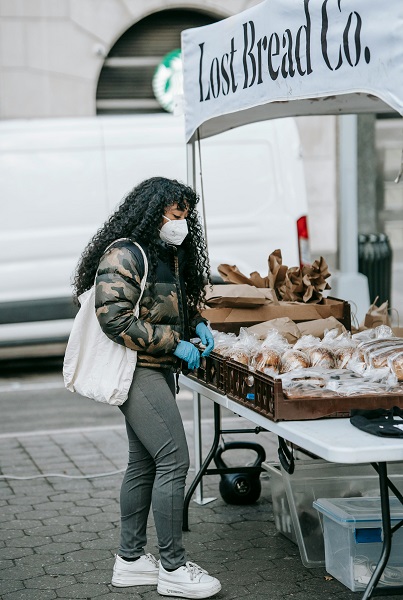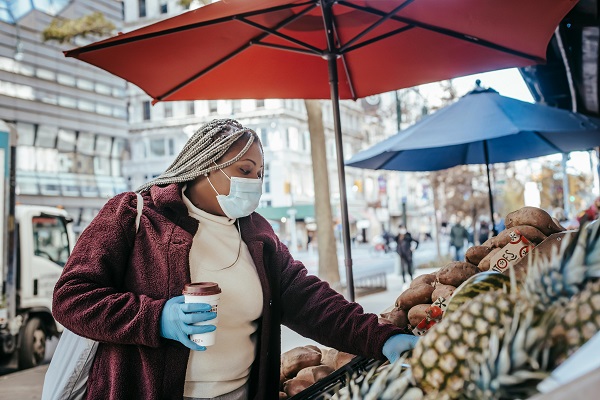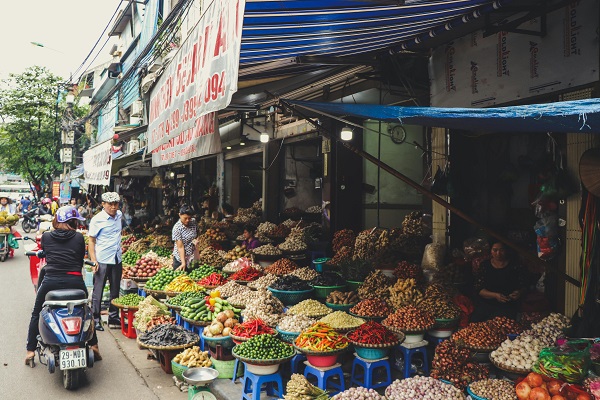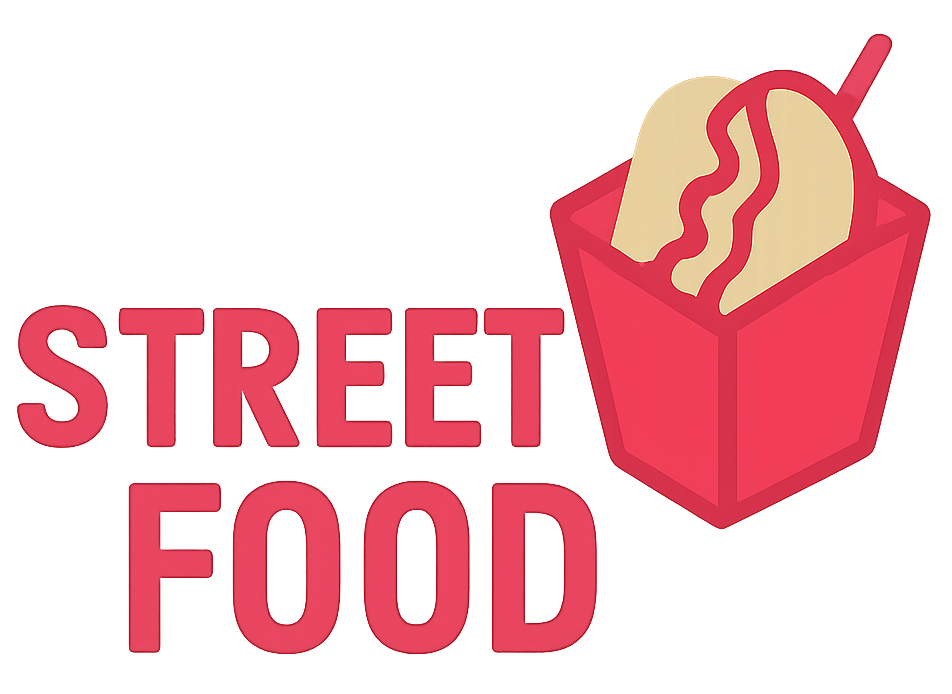Street food is an integral part of many cultures across the globe, offering a variety of mouthwatering dishes that are both affordable and convenient. From savory snacks to sweet treats, these food stalls can be found in busy city streets, near markets, and outside offices, providing busy individuals with a quick and delicious meal. However, for street food vendors to thrive, there are several key factors they need to consider: the right location, the necessary licenses, and ensuring food safety standards.
What is a Street Food Vendor?
A street food vendor is an individual or small business that sells food from a mobile setup, typically located on public streets, parks, or near busy markets. Street food vendors often serve a wide range of foods, from local delicacies to international cuisine, and offer quick, affordable meals to people on the go. Whether it’s Indian street food vendors selling pani puri, Chinese street food vendors offering dumplings, or NYC street food vendors dishing out hot dogs and pretzels, these vendors are an essential part of the global food scene.
Below is a look at Street Food Vendors.
1. Understanding Street Food Vendors
Street food vendors are individuals or businesses that sell food from a mobile or temporary setup in public spaces, such as streets, sidewalks, or parks. These vendors often operate on a small scale, offering a wide variety of foods ranging from traditional ethnic dishes to modern fusion food. In many countries, street food is a crucial part of the local food culture, providing affordable meal options for those on the go.
As food culture continues to evolve, street food vendors are adapting to modern tastes, introducing more diverse offerings, and embracing digital tools to streamline their operations. Street food vending can be a lucrative business, but it requires careful planning, knowledge of food safety, and the ability to navigate legal regulations.
2. Choosing the Right Location for Street Food Vending
The location of a street food stall is paramount to its success. A strategic location can significantly increase foot traffic, which translates to higher sales. However, there are a few essential factors to consider when selecting a vending spot:
a. High Foot Traffic Areas
Street food vendors should aim to set up shop in places with high foot traffic, such as busy streets, markets, near schools, office buildings, or tourist attractions. People walking by are more likely to stop for a quick meal if the stall is in a location that sees a lot of passersby.
b. Proximity to Competition
While a busy area can bring customers, vendors should also consider how close they are to other street food vendors. Too much competition in a small area may result in lower sales, so vendors need to gauge whether the location is overcrowded with similar offerings. On the other hand, being near another vendor who complements the menu (such as offering beverages next to a food stall) can be a win-win.
c. Accessibility and Convenience
Vendors should choose a website that customers can easily access. A stall located near public transportation stations, parking lots, or community centers will ensure a constant stream of customers. Easy access also helps vendors in managing their supplies and operating more efficiently.
d. Local Laws and Regulations
Every city or region has different rules regarding where vendors can operate. For instance, some cities may require food vendors to set up at specific designated spots, while others may not allow food sales in certain areas. Street food vendors need to research the local laws and choose locations that are compliant with zoning regulations.
e. Seasonal Factors
Street food can be a seasonal business. For example, in some regions, food vendors may thrive more in warm weather, as people are more likely to be outside and hungry. Conversely, colder months may slow down business, so vendors should plan accordingly by considering indoor locations or selling more weather-appropriate foods.
3. Licenses and Permits for Street Food Vendors
Operating a street food business requires obtaining various licenses and permits to comply with local health, safety, and business regulations. Fines, legal problems, or even the company’s closure may result from noncompliance with these rules. In 2025, licensing requirements are becoming more stringent, and vendors must be aware of the paperwork and legal procedures involved.
a. Business License
A business license is the most basic requirement for operating any type of commercial venture, including street food vending. This license legally registers the vendor as a business entity and ensures that they are compliant with local tax regulations. The requirements for obtaining a business license vary depending on the jurisdiction, but generally, the vendor will need to provide identification, proof of address, and sometimes a business plan.
b. Health Department Permits
For street food vendors, food safety is a big issue.In 2025, health regulations are becoming stricter, with heightened focus on hygiene and sanitation. Vendors must obtain a permit from the local health department, which is usually issued after an inspection of the food stall. The inspection will focus on how the food is prepared, stored, and served, ensuring it meets the local health and safety standards.
Vendors must also take food safety courses, demonstrating their knowledge of safe food handling practices, including the proper storage of perishable items and keeping raw and cooked foods separate to prevent contamination.
c. Food Handler’s Permit
Many local authorities require food vendors to have food handler’s permits. This permit indicates that the vendor and their employees have received proper training in food safety. The training may cover a variety of topics, such as handwashing, safe food temperatures, avoiding cross-contamination, and pest control.
d. Vendor Permit
In many cities, a specific vendor permit is required to operate on public property. This permit ensures that the vendor has permission to use public spaces for their business activities. Without this permit, vendors can be subject to fines and removal from their location. The requirements for obtaining a vendor permit will vary, but they usually involve an application process where the vendor must provide their business details, location, and other relevant information.
e. Fire Safety Permits
If a vendor is cooking food that involves open flames, such as grilling, frying, or boiling, they will likely need a fire safety permit. This permit ensures that the food stall complies with local fire safety codes, which may include the installation of fire extinguishers, proper ventilation, and maintaining a safe distance from flammable objects.
f. Music or Entertainment Licenses
Some food vendors like to create an atmosphere by playing music or providing live entertainment. In such cases, they may need to acquire additional licenses. These could include a music license to play copyrighted material or a performance permit for entertainers.
g. Taxes and Compliance
Vendors should also ensure that they comply with tax regulations. This includes collecting sales tax, submitting regular tax returns, and maintaining accurate financial records. In some places, vendors may also need to register for VAT (Value Added Tax) or other forms of taxation, depending on the volume of business they do.
4. Ensuring Food Safety: Best Practices for Street Food Vendors
Food safety is among the most crucial considerations while serving street food. With foodborne illnesses posing a significant health risk, vendors must adhere to strict hygiene and safety practices to ensure that their customers are served safe, quality food. By 2025, food safety regulations are becoming increasingly important, and vendors must take proactive measures to minimize risks.

a. Maintain Proper Food Temperature
Maintaining food at the proper temperature is one of the most crucial elements of food safety. Vendors should always monitor the temperature of both hot and cold foods.Cold meals should be stored at or below 40°F (4°C), while hot foods should be maintained at or above 140°F (60°C). This keeps dangerous bacteria from growing and guarantees the safety of the food.
b. Cleanliness and Hygiene
To prevent contamination, vendors must uphold strict cleanliness standards. This includes regularly cleaning surfaces, utensils, cooking equipment, and hands. Handwashing stations should be available, and vendors must ensure that they wash their hands frequently, especially after handling raw foods or using the restroom.
c. Avoid Cross-Contamination
Cross-contamination occurs when harmful bacteria from raw food come into contact with cooked or ready-to-eat foods. Street food vendors can avoid this risk by using separate cutting boards, knives, and utensils for raw and cooked foods. Additionally, vendors should store raw meats away from other foods and cook them thoroughly before serving.
d. Pest Control
For street food vendors, pests like mosquitoes and rats can be extremely harmful to their health. Maintaining a clean and hygienic environment is key to preventing pest infestations. Vendors should inspect their stalls regularly for signs of pests and take immediate action if any are found. Using sealed containers for food storage and ensuring that food is covered at all times can help prevent pest problems.
e. Waste Management
Proper waste disposal is essential for food safety. Vendors should ensure that waste bins are available for customers to dispose of their trash, and they should have a system in place for disposing of food scraps, packaging, and other waste materials. Waste bins should be emptied regularly to prevent them from overflowing and attracting pests.
f. Training Staff
Vendors who employ others must ensure that their staff are properly trained in food safety procedures. This includes educating employees on hand hygiene, the importance of wearing gloves when handling food, and the steps to take if they notice something is wrong with the food.
g. Packaging and Serving
For food safety and cleanliness to be maintained, proper packaging is essential.To prevent food from becoming contaminated, vendors should utilize hygienic, food-safe packing materials.Additionally, they should ensure that the food is served in a way that minimizes exposure to airborne bacteria and dirt.
Street Food Vendors: A Global Look into the Business of Delicious Convenience
Street food is more than just a quick meal; it’s a cultural phenomenon enjoyed by millions across the world. From the bustling streets of New York City to the vibrant markets of India and the Philippines, street food vendors play a pivotal role in the culinary landscape, offering diverse, affordable, and convenient meals to a variety of people. This article delves into the exciting world of street food vendors, including notable locations, licenses, safety tips, ethical considerations, and how to become a successful vendor. We will also explore trends in street food across different countries, such as the Philippines, India, and the UK, with a special focus on NYC and Ventura’s street fair food scene for 2024.
What is a Street Food Vendor?
A street food vendor is an individual or business that sells food from a mobile setup, such as a cart, truck, or stall, typically in high-traffic public areas. Street food is often sold at affordable prices and offers quick service, catering to people looking for a convenient snack or meal while on the go. Street food vendors may serve a wide variety of dishes, from traditional local foods to international cuisine, with many vendors specializing in unique offerings that highlight their cultural heritage.
Street food is an integral part of urban life, especially in densely populated cities where people prefer quick and affordable meal options. This phenomenon is not limited to developing countries; street food can be found in nearly every corner of the globe, including major cities like New York, London, and Manila.Street foods vendors provide quick, affordable, and diverse meals, offering a taste of local culture on every corner.
The Growing Popularity of Street Food Vendors
The demand for street food has increased significantly worldwide in recent years. . Whether you’re walking through the crowded streets of London, the lively markets in India, or attending a 4th of July street fair in Ventura, there’s something uniquely appealing about street food vendors. Their ability to serve a variety of flavors quickly and affordably makes them highly popular among all age groups and income levels.

Street Food Vendors in the Philippines
Street food sellers are common in nations like the Philippines, where they sell a variety of delicacies such kwek-kwek, isaw, fish balls, and balut.These vendors are an integral part of the food culture in the Philippines, where people from all walks of life enjoy these simple yet flavorful dishes.
A study on street food vendors in the Philippines shows how important they are to the national economy. These vendors not only provide affordable food but also contribute to the local economy by creating employment opportunities. However, challenges such as health and safety standards often need attention, which brings us to the importance of food safety awareness for vendors.
The importance of street food sellers to the local economy and culinary culture is highlighted by RRL regarding them in the Philippines. Research reveals that street food is a primary source of affordable nutrition for many Filipinos, especially in urban areas. Studies emphasize the socio-economic impact, job creation, and the challenges vendors face, such as health and safety concerns. These results highlight the need for improved Philippine vendor support and regulation.
Notable Street Food Vendor Locations
The locations of street food vendors can dramatically impact their success. Vendors often seek spots that offer high foot traffic, accessibility, and visibility, allowing them to maximize sales. Here are some key locations where street food vendors can be found:
1. 4th july street fair food vendors list 2024 ventura
The 4th of July street fair in Ventura, California, is one of the largest celebrations of the year. Street food vendors are a staple of this fair, offering everything from traditional American BBQ to international cuisine. The event attracts thousands of people, and food vendors play a major role in its success. Vendors offering foods like hot dogs, corn on the cob, and cotton candy are crowd favorites, making this a prime location for street food vendors in 2024.
2. Moble food vendor nyc street park
New York City’s urban culinary sector relies heavily on mobile food vendors. These vendors operate across the city’s parks, particularly in areas like Central Park and Washington Square Park, offering a range of delicious foods.The city’s street food culture is vast and varied, ranging from vendors selling pretzels and hot dogs to halal carts serving chicken and rice.
New York’s strict street food vendor license regulations ensure that these vendors meet safety standards while offering their culinary delights. NYC street food vendors have become iconic symbols of the city, offering both locals and tourists a taste of the Big Apple on the go.
3. street food vendors in india
Some of the most savory and varied street cuisine in the world can be found in India. Indian street food vendors offer dishes like pani puri, bhel puri, and samosas in bustling markets, corners of urban streets, and by roadside stalls. The wide variety of street food vendors india makes it an exciting place for food lovers to explore.
While street food in India is generally affordable and delicious, vendors face unique challenges, such as navigating through overcrowded areas and ensuring food safety practices. Given the country’s vast size and cultural diversity, street food vendors cater to a wide range of tastes and preferences, with spicy snacks, sweet treats, and savory delights being common offerings.
4.Street food vendors london
Street food vendors in London have become an essential part of the city’s vibrant culinary scene. From bustling markets like Borough Market to trendy street food festivals, vendors offer a diverse range of flavors, from traditional British dishes like fish and chips to international favorites such as Mexican tacos and Thai curries. These vendors play a crucial role in making London’s food culture dynamic, offering quick, affordable, and delicious meals to locals and tourists alike.
How to Become a Street Food Vendor
A fulfilling and enterprising job path is being a street food vendor. However, there are several essential steps to ensure success in this competitive market:
1. Legal Considerations: Business Licenses and Permits
Before becoming a street food vendor, you must secure the necessary business permits and licenses. In cities like NYC, the process for obtaining a street food vendor license nyc is specific and strict. Vendors must follow local regulations regarding food handling, waste disposal, and operating in designated areas. In some regions, vendors are required to attend health and safety courses and pass inspections before they are allowed to sell food to the public.
how to get business permit for street food vendors—To get a business permit for street food vending, start by registering your business with the Department of Trade and Industry (DTI) or Securities and Exchange Commission (SEC) for corporations. Then, apply for a barangay clearance and a Mayor’s Permit at the local government unit (LGU). Obtain a health permit, comply with food safety regulations, and pass fire safety inspections if necessary.Consult your local government for specific requirements.
2. Choosing a Menu
The keys to a successful street food business is a carefully crafted menu.Vendors should select dishes that are not only easy to prepare but also have mass appeal. It is important to focus on local or ethnic specialties, as well as trendy foods, to create a unique offering. For instance, Chinese street food vendors often focus on dumplings, noodles, and skewers, while Indian street food vendors may serve samosas and chaats.
3. Equipment and Setup
Purchasing top-notch equipment is essential for every street food operation. Vendors need portable carts, food warming containers, refrigerators, and utensils that are easy to transport and clean. Selecting the ideal website is also essential for drawing clients.
4. Marketing Your Street Food Business
Word-of-mouth, social media marketing, and digital tools can help boost your street food business. As a street food vendor, building a brand identity and engaging with customers online can significantly increase your visibility and customer base.
5.Clip art street food vendor in Spain
clip art street food vendor spain often depicts vibrant and colorful images of food stalls selling iconic Spanish street foods like churros, tapas, and paella. These illustrations capture the lively atmosphere of Spanish streets, especially during festivals or local fairs. They highlight vendors serving delicious and traditional meals, reflecting Spain’s rich culinary heritage and its love for outdoor dining, making it a great way to promote or represent Spanish street food culture.
Food Safety Awareness and Practices for Street Food Vendors
The value of food safety in the street food industry cannot be overstated. Street food vendors must comply with strict health and safety regulations to avoid foodborne illnesses and ensure their customers’ well-being.The following are important food safety guidelines and procedures that street food sellers should adhere to:

1. Hygiene and Sanitation
Maintaining proper sanitation is critical for street food vendors. Vendors should ensure that their carts and cooking areas are kept clean, and they should regularly disinfect surfaces, utensils, and cooking tools. Handwashing stations should be easily accessible, and food vendors should use gloves when handling food.
2. Safe Food Storage
For example, to stop harmful bacteria from developing sections must be stored at suitable temperatures. To maintain the freshness of perishable goods, vendors need to purchase refrigeration machines. Additionally, vendors should ensure that foods like meats are cooked thoroughly to avoid contamination.
3. Waste Management
Proper waste management is essential for keeping the food preparation area clean and avoiding pest infestations. Vendors should dispose of waste promptly and ensure that trash bins are well-maintained.
4. Pest Control
Street food vendors must ensure their operations are free from pests, including insects and rodents. Proper storage of food and regular cleaning can help prevent infestations.
Ethical Issues in the Street Food Vendor Business
As street food vending becomes more mainstream, vendors must be aware of ethical issues surrounding their business practices. These include:
| Ethical Issue | Description | Potential Solutions |
| Fair Labor Practices | making certain that employees are treated with respect, are paid fairly, and work in a safe environment. | Provide competitive wages, enforce labor rights, ensure safety protocols, and offer a positive work environment. |
| Sustainable Sourcing | Using ingredients that are sourced ethically, without exploitation of workers or harmful environmental practices. | Purchase from local, sustainable suppliers and consider organic or ethical farming practices to minimize environmental impact. |
| Waste Management | Handling food waste and packaging waste in an eco-friendly manner. | Use biodegradable packaging, minimize food waste, and recycle waste appropriately to reduce the environmental footprint. |
| Compliance with Local Regulations | fulfilling safety, neat, and health necessities while employed in order to safeguard the public’s health. | Obtain the necessary permits, regularly check local regulations, and ensure food handling meets safety standards. |
| Animal Welfare | Ensuring humane treatment of animals used in food production, particularly for meat vendors. | Source meat from ethical farms with humane practices and be transparent about sourcing methods to customers. |
| Transparency | supplying truthful details regarding the ingredients and cooking techniques. | Clearly label ingredients and disclose sourcing practices to customers, ensuring they are informed about the food they consume. |
| Fair Competition | Competing fairly with other vendors without using unethical tactics or underpricing to drive others out. | Adhere to fair pricing practices, avoid monopolizing areas, and respect other vendors’ business operations. |
| Health and Safety Practices | preserving the cleanliness and quality of the food to protect consumers as well as staff members. | Regularly clean cooking equipment, maintain proper food storage temperatures, and ensure that workers follow hygiene protocols. |
| Cultural Sensitivity | Being respectful of local customs, dietary restrictions, and traditions when preparing food. | Educate employees about cultural norms, be mindful of food sensitivities (e.g., vegetarian, halal), and respect local customs. |
| Environmental Impact | Minimizing the environmental damage caused by operations, particularly waste and pollution. | Adopt greener practices like reducing plastic, using eco-friendly materials, and limiting carbon emissions from cooking equipment. |

Conclusion: The Dynamic World of Street Food Vendors
Street food vendors play an integral role in global food cultures, providing diverse, affordable, and convenient meal options to people in cities, towns, and busy markets. From the bustling NYC street food vendors serving iconic treats to the Indian street food vendors offering traditional snacks like samosas and pani puri, street food is deeply woven into the fabric of urban life across the world. Locations like the 4th of July street fair in Ventura, mobile food vendors in NYC street parks, and vibrant food scenes in places like London, the Philippines, and Spain showcase the global appeal and adaptability of street food.
Becoming a street food vendor involves understanding the business landscape, including obtaining the necessary licenses, permits, and meeting food safety standards. Whether you’re interested in starting a business in India, the UK, or Malolos, the process generally requires securing a street food vendor license and a business permit. Ethical practices like fair labor, sustainable sourcing, and waste management must also be considered to run a responsible operation.
While the earnings of street food vendors vary, they can be influenced by factors such as location, demand, and the type of food offered. In India, the UK, and NYC, the income potential for street food vendors can be significant, especially during peak seasons or in high-traffic areas. However, vendors must also navigate the challenges of competition and regulations, making it a business of both opportunity and responsibility.
In conclusion, the street food industry remains an exciting and essential part of urban life worldwide. For aspiring vendors, success in this field requires careful planning, adherence to food safety regulations, an understanding of the legal landscape, and a commitment to ethical practices. Whether you’re starting a street food business in Malolos, NYC, or India, the potential for growth is vast, offering both financial rewards and the joy of connecting with people through food.
FAQs:
1. How much do street food vendors make?
Street food vendors’ earnings vary widely depending on factors like location, type of food, customer volume, and operating hours. Vendors in high-traffic areas or during busy events can make anywhere from $50 to $500 per day, or even more during peak seasons. Profit margins can be significant due to low overhead costs, especially in smaller operations.
2. How to be a street food vendor?
To become a street food vendor, you need to decide on a food concept, find a suitable location, and ensure compliance with local regulations. This involves obtaining licenses, meeting health and safety standards, and setting up your equipment. Research the market, create a business plan, and make sure to have high-quality food and excellent customer service.
3. How to become a street food vendor?
Becoming a street food vendor requires registering your business, obtaining the necessary licenses and permits, and choosing a location. You’ll need to plan your menu, source ingredients, set up your stall or food truck, and meet health and safety regulations. Many vendors start with a cart or truck, keeping the investment low and testing the business in different locations.
4. How to get a street food vendor permit?
To get a street food vendor permit, you must apply at your local city hall or relevant government office. Requirements often include proof of identity, location details, a business plan, and health and safety inspections. Ensure you comply with zoning laws and meet the health department’s standards for food handling and preparation.
5. How to get a street food vendor license?
A street food vendor license is usually obtained through the local health department or business licensing office. You’ll need to fill out an application, pass a health inspection, and meet safety standards for your food setup. This process also involves paying fees and providing documentation like your food handler’s certification and business registration.
6. How much do street food vendors make in the UK?
In the UK, street food vendors can earn between £100 and £500 per day, depending on the location, type of food, and customer demand. Vendors in busy areas like London or at events may earn significantly more. However, expenses such as permit fees, equipment, and ingredient costs can impact profits.
7. How to get a license for a street food vendor?
To get a license for a street food vendor, you need to apply with your local council or health department. The process typically involves submitting an application with required documents, including your business details, health and safety certification, and food handling practices. You may also need to undergo an inspection before your license is approved.
8. How much do street food vendors make in India?
In India, street food vendors earn varying amounts based on location and the type of food sold. Typically, vendors can make between ₹1,000 to ₹5,000 a day, particularly in high-traffic areas or tourist destinations. Earnings can increase significantly during festivals or special events.
9. Can street food vendors do business in front of houses?
Street food vendors generally cannot operate in front of residential houses without proper permits, as local zoning laws typically regulate vending locations. However, vendors can apply for permission from local authorities to operate in such areas, provided they meet health and safety regulations and do not disrupt public peace.






